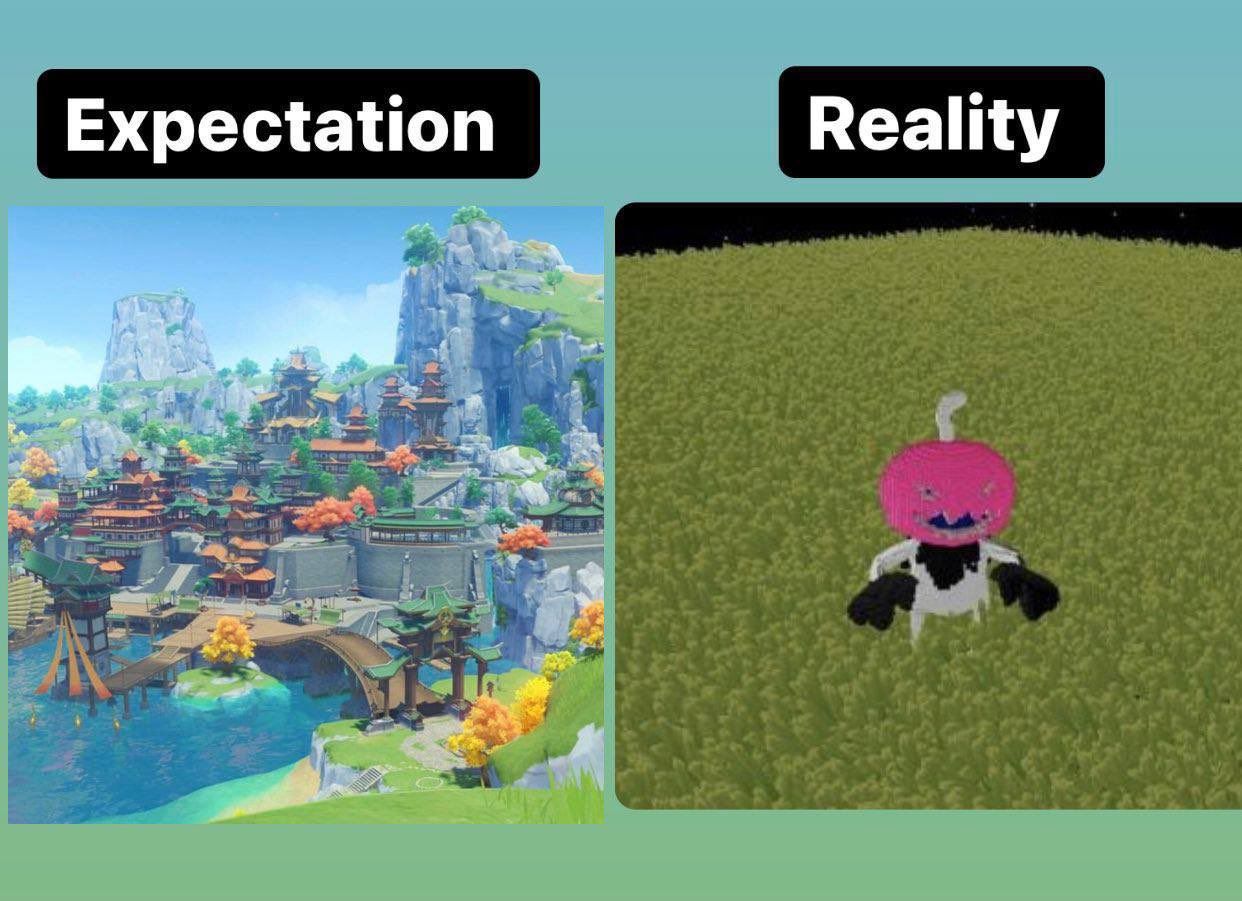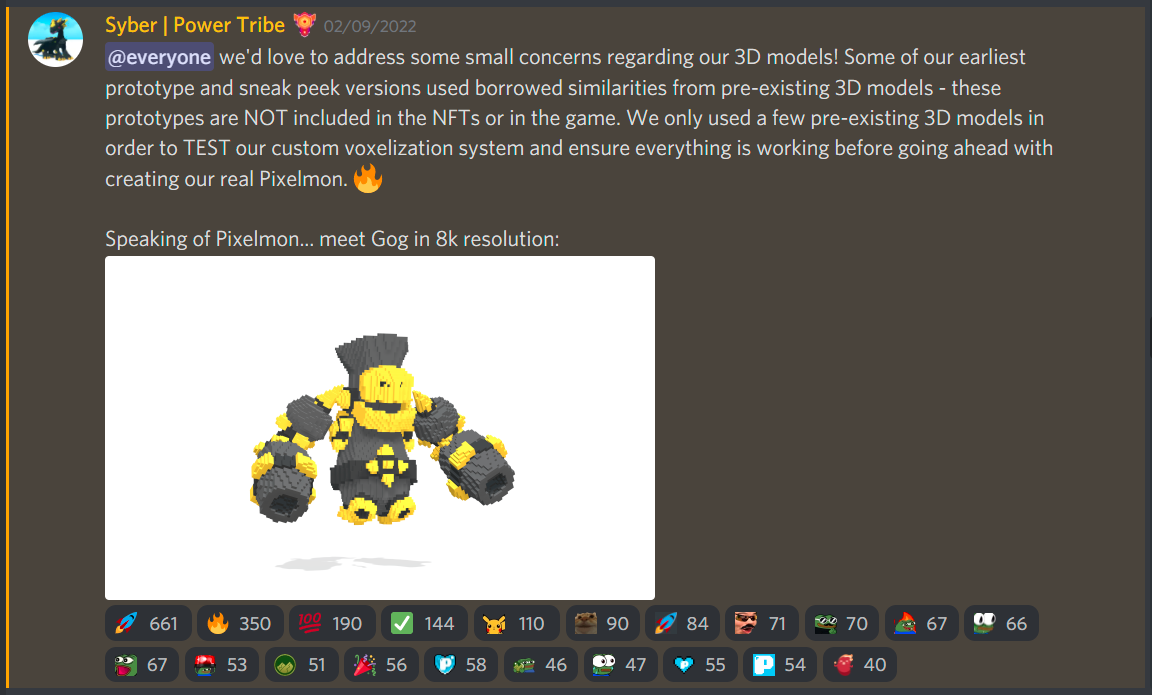Dear Bankless Nation,
A specter is haunting the NFT ecosystem—the specter of cash grab NFTs.
We saw that dynamic play out in ugly fashion this past weekend upon the Pixelmon project metadata reveal.
Collectors were expecting cute Pokemon-like creatures, but instead they got, well, “Kevin” (as many are now jokingly referring to the NFT in the tweet below) and his other botched siblings.
As more details have come out, the picture that’s developed of the project matches the visuals of its initial art, i.e. it ain’t pretty. Let’s catch up on the big ideas of this unfortunate episode for today’s Metaversal.
-WMP
The Pitiful Pixelmons

What Pixelmon is
- Pixelmon was pitched by its creator Syber as an open-world RPG NFT game.
- Set to be inspired by Pokemon and Minecraft visuals, Pixelmon Generation 1 NFTs were also going to grant additional perks in the purported game’s ecosystem, e.g. optimized in-game earnings.
- All along the way, Syber aggressively hyped the project. For example, in Dec. 2021 the founder said: “Pixelmon is the next blue chip. This is financial advice. Don’t do your own research.”

What happened
The Pixelmon project kicked off a Dutch auction-style mint on Feb. 7th. The starting price per NFT was 3 ETH, and the team ended up raising ~$70M worth from the sales.
The Pixelmons Hatching, or metadata reveal, took place on Friday, Feb. 25th. Yet weeks prior, the project’s team was already fielding concerns that their NFTs would be reused 3D voxel models, e.g. the kinds you can buy on model marketplaces for dozens or hundreds of dollars. At the time, Syber was adamant they weren’t using any prototypes.

Alas, the Hatching rolled around and collectors, some who spent as much as 3 ETH per NFT, expected to be greeted with epic new voxels pets like this:

Yet instead, many Pixelmons collectors were met with bungled NFTs like these:
The Pixelmon team response
In the wake of the metadata reveal, outraged collectors immediately took to social media to lambast the NFTs they had received compared to what they’d been promised.
Trying to get a handle on the outcry, Syber told the community on Feb. 25th:
“I'm not going to sugar coat it - we made a horrible mistake.”
“We felt pressured to push reveal and the reality is we weren't ready to push the art work.”
“What we have now was built before we raised any funding raised from our NFT sales. Our immediate next steps to resolve these issues are to pledge $2,000,000 in order to completely revamp and redesign our NFTs at a higher quality.”
The community response
- The growing attention around the Pixelmons art reveal led to multiple citizen sleuths digging deeper into the details of the project’s launch. For example, OKHotshot.eth aggregated many troubling revelations in the long Twitter thread below.
As such, the public has since learned:
The Pixelmons art is based on inexpensive 3D stock models and the project’s vision was ripped off from an existing Minecraft mod. (Here’s a more technical explaination of the art’s problems).
Syber hired an artist from freelancer platform UpWork for less than the price of a single Pixelmon mint and didn’t disclose the refining work would be for an NFT project.
The Pixelmon game demo may have been copied from an indie game developer’s project.
Worse yet, the Pixelmon NFTs that do exist today have completely centralized metadata.
Instead of returning funds to minters, the Pixelmon dev wallet spent 100s of ETH on other NFTs like Bored Apes, Azukis, and beyond.
Additionally it’s come to light that Syber has a history of failed Kickstarters and no game dev experience.
In response to the public outcry, the founder said the Pixelmon team “has taken a step back to assess the situation so we can move forward even stronger.” Later, Syber added that “We have created one of the most talked about projects ever in the NFT space and we aren’t going to stop.”
The rise (and fall?) of Kevin
Within one day of the Hatching, the floor price of the Pixelmon collection dropped as low as 0.3 ETH, marking a x10 drop from the pieces’ 3 ETH starting price.
Making the most of a bad situation, many around the NFT ecosystem started joking referring to one of the uglier botched Pixelmons as Kevin, and Kevin’s popularity as an ironic meme has quickly grown since.
However, now with all that we know it’s clear Pixelmons isn’t a serious project that’s here to stay, so Kevin’s meme power only has so much runway from here.
The big picture
- Was Pixelmons a case of “the road to hell is paved with good intentions,” or an outright scam? I know Syber has maintained that the former is true, yet in light of all the facts I think outright scam is a totally fair description.
- Many of the actions the project undertook (abusing the artist, hyping up a 3 ETH mint for a non-existent project) are inexcusable. The question now is to what extent, or rather for how long, will Syber continue to “salvage” and redeem the Pixelmons project. With a newfound ETH warchest, they can keep up the effort — or the charade — for some time.
- My takeaway? It’s feeling like the ICO era is in full swing but for the contemporary NFT ecosystem, i.e. vaporware projects with little more than a website are getting away with raising huge sums of ETH. Hopefully if we can keep educating newcomers to help them better identify NFT red flags early on, we can make it harder for these scam projects to survive.
Action steps
- 🚨 What do you think? Is Pixelmons a scam or more likely the case of a team that bit off more than it could chew? Let me know in the comments below!
- 🌍 Check out my previous post NFTs in the real world if you missed it last week
